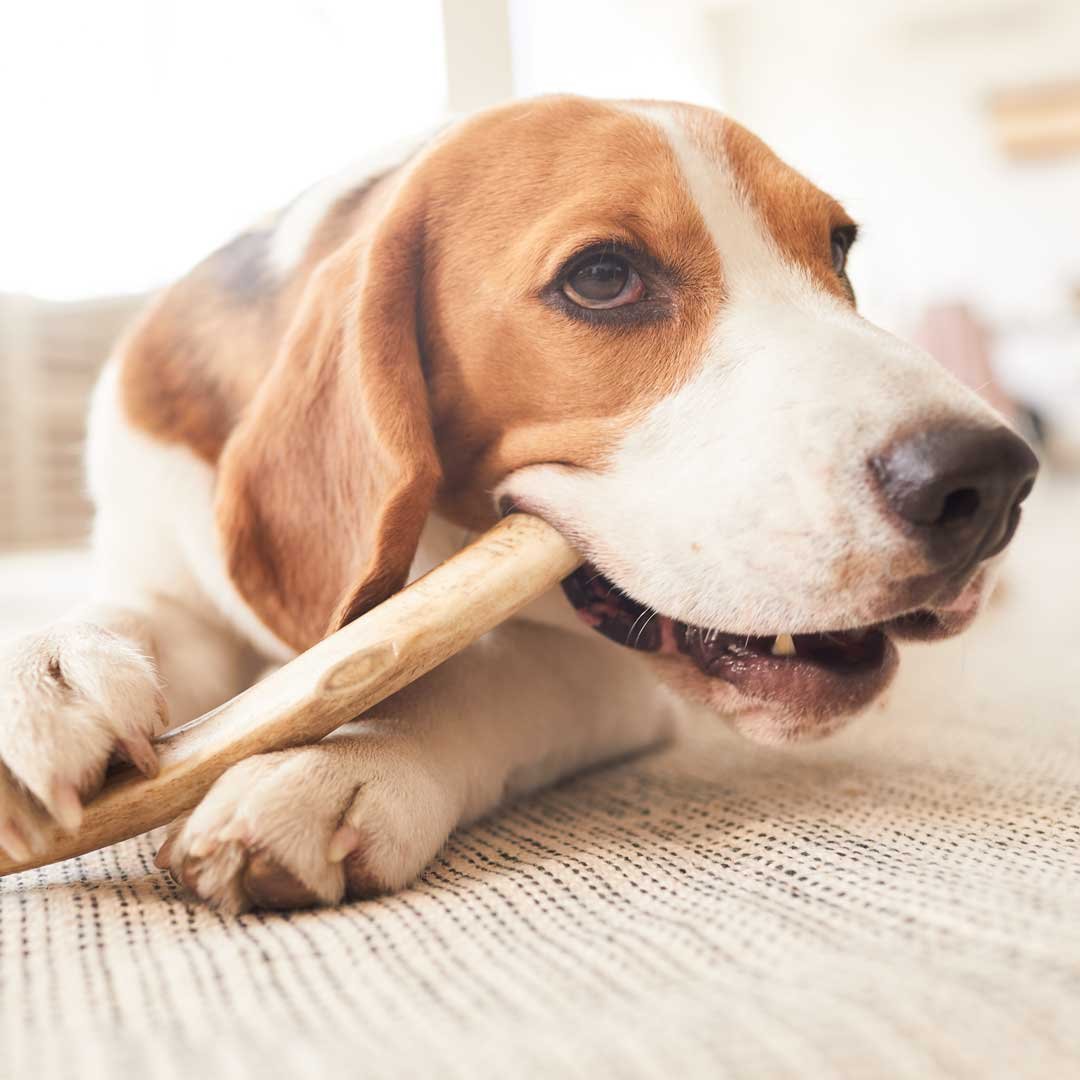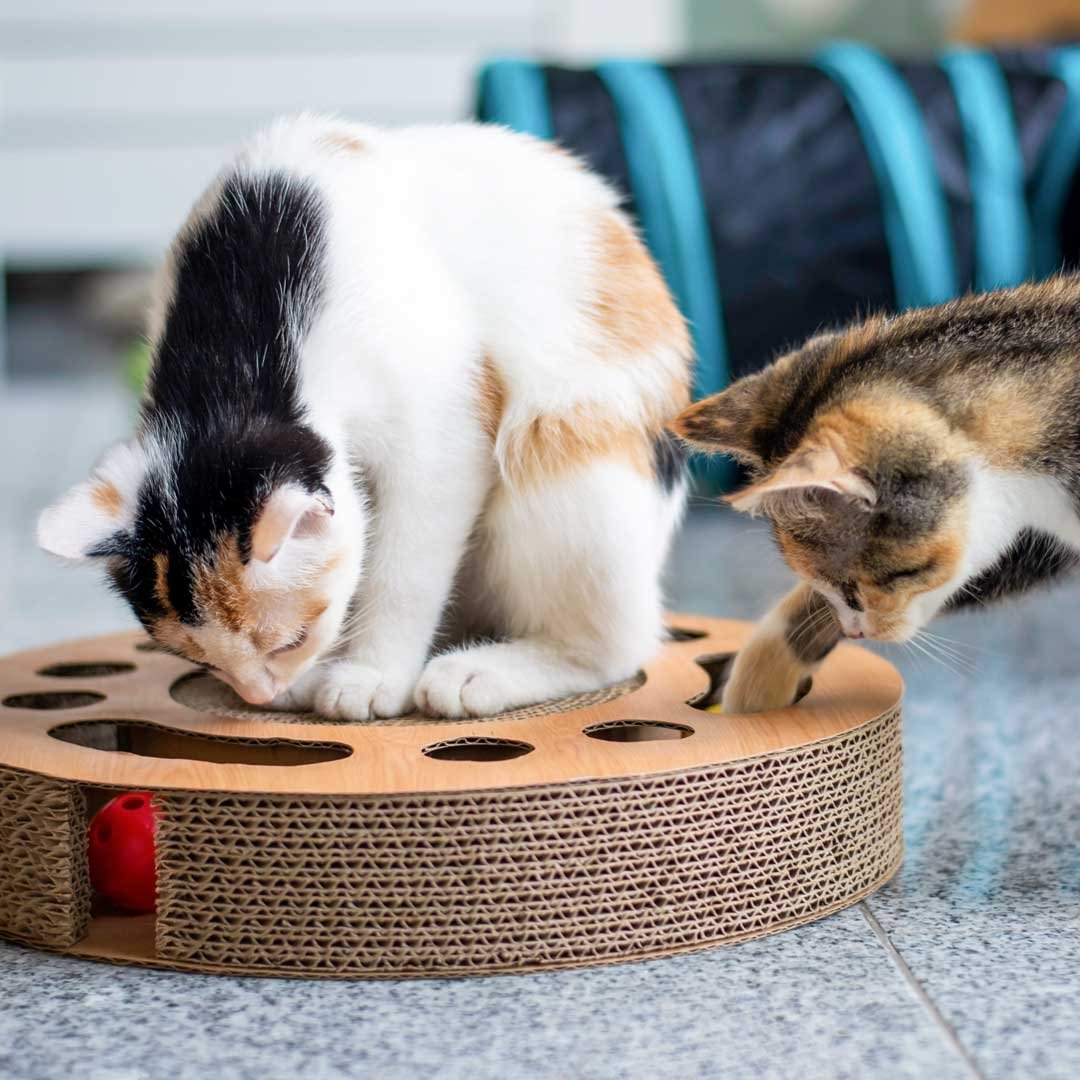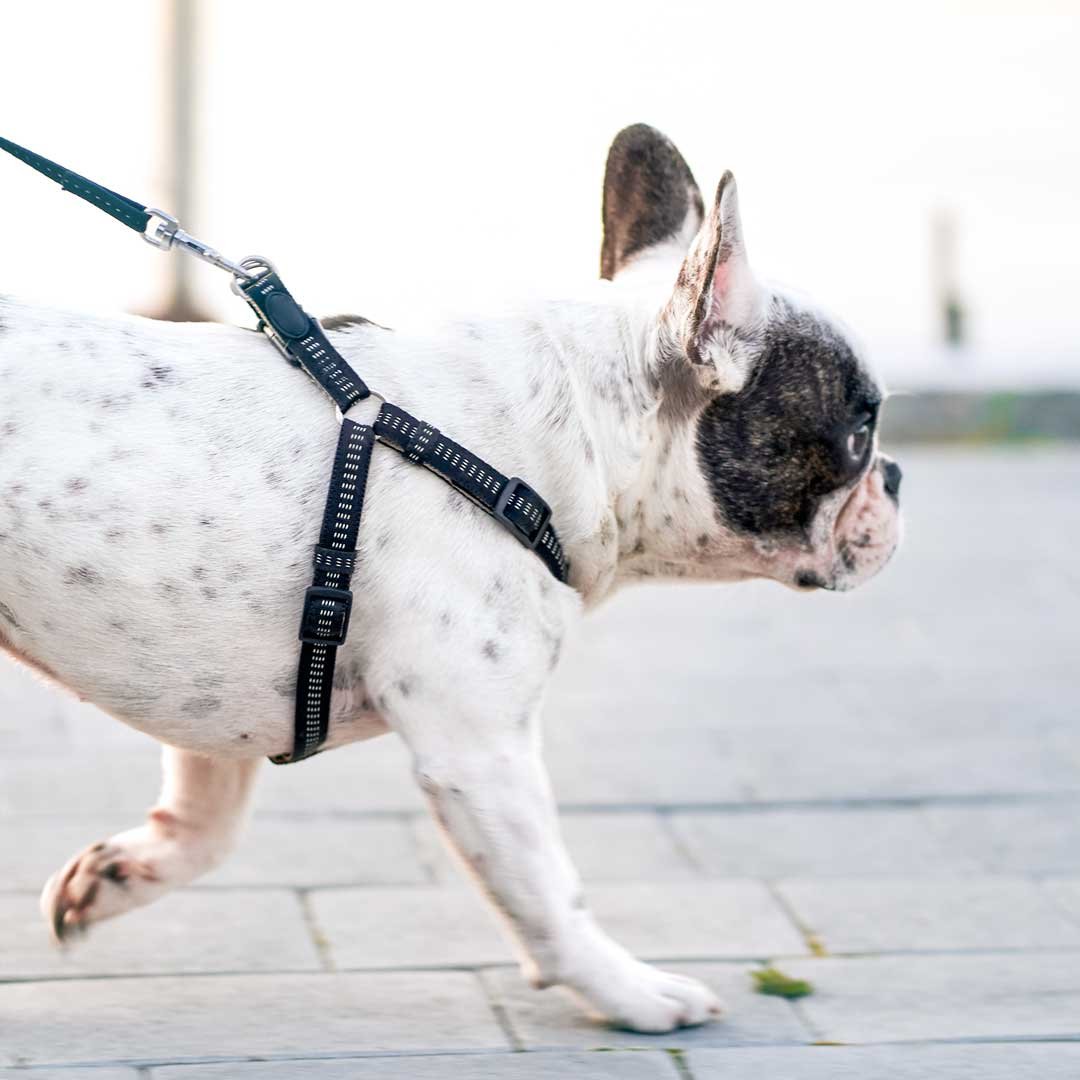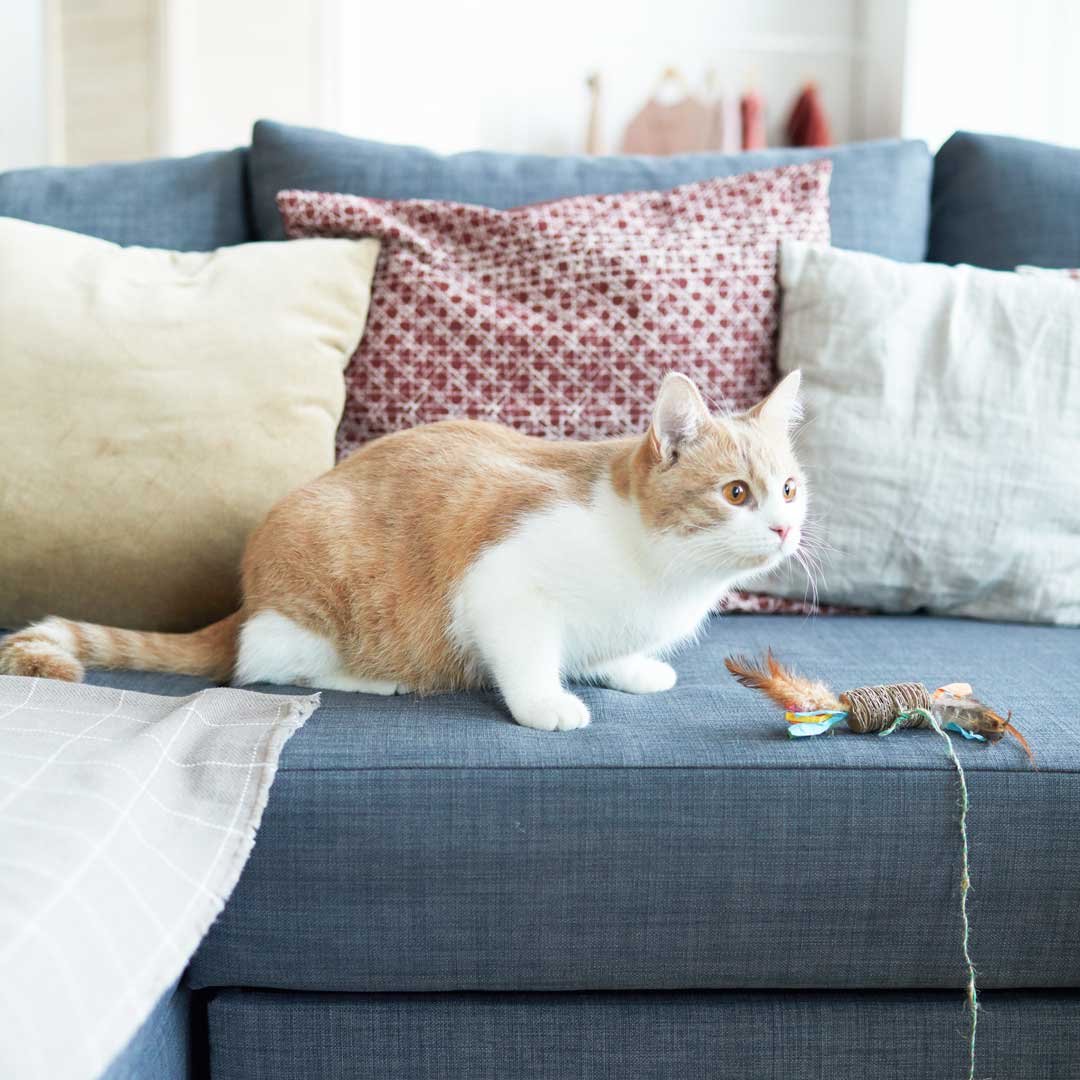Did you know almost one-third of puppy owners see bad habits in their pets? This shows how much we need good dog training. We’re here to help you learn the best ways to teach your dog. Start teaching your dog how to behave right now.
Training starts with puppy crate training and goes up to leash training. Positive reinforcement training is key. It helps stop bad habits. At the same time, it builds trust and respect. Let’s make your dog’s behavior better together. Our advice will make time with your dog more fun.
Key Takeaways
- Understanding the importance of dog training in rectifying common behavioral issues
- Implementing positive reinforcement training as a compassionate and effective approach
- Mastering essentials such as puppy crate training and leash training
- Learning the art of behavior modification to foster better dog obedience
- Exploring various canine training techniques for a comprehensive learning experience
- Balancing fun and discipline through structured dog obedience classes
The Foundations of Dog Training
Successful dog training is based on key principles. When used well, they make learning good for both dogs and trainers. One principle is positive reinforcement training. It means giving rewards for good behavior. We also need dog training consistency. It makes things clear for the dog. Lastly, it’s important to have a rewarding training environment. This makes training fun for dogs.
Understanding Positive Reinforcement Training
Positive reinforcement is at the heart of modern dog training. It rewards the good things our dogs do. Rewards can be treats, praise, or play. With positive reinforcement, dogs learn in a happy and effective way.
Consistency: The Key to Effective Teaching
Being consistent in dog training is key. We must use the same commands and rewards. This helps dogs understand us better. Consistency gives dogs the structure they need. It makes learning easier and less frustrating for everyone.
Establishing a Fun and Rewarding Training Environment
Making learning fun is essential in training. This means more than just giving treats. It includes games and activities that build a bond with our pets. A fun training environment keeps dogs excited to learn. It also keeps them mentally sharp and happy to please.
| Training Principle | Why It’s Important | How to Implement |
|---|---|---|
| Positive Reinforcement | Encourages repetition of good behaviors through rewards | Identify what motivates your dog and offer it as a reward for correct behaviors |
| Consistency | Provides clear communication and trust between dog and trainer | Use the same commands, cues, and rewards system in every training session |
| Rewarding Environment | Keeps the dog engaged and motivated to learn | Incorporate play and training games to make learning enjoyable |
By sticking to these principles, we guide our dogs to behave well. Positive reinforcement, consistency, and fun make training rewarding. They strengthen the bond between us and our pets.
Incorporating Paws Up Activities into Training
Dog training has many methods. Paws up training is a fun way to boost skills. It adds fun and helps with balance and confidence. With incorporating fun activities in training, our time with dogs becomes playful. It turns into a time dogs look forward to.
Paws up training has big benefits. It’s not just a high-five. It teaches dogs to touch objects with their front paws. These can be from a curb to a training platform. This makes training both useful and fun. So, how do we add paws up activities into daily training?
- Start with low objects to make your dog feel safe. Then, try higher ones.
- Give treats or toys as rewards for doing the paws up command well.
- Mix paws up training with commands like ‘sit’ or ‘stay’ for fun sessions.
- Make training short and lively to keep your dog happy and focused.
Next, we will share more tips and examples. We’ll show how to get the most from paws up training.
Building Confidence with Paw-on-Object Tricks
Paw-on-object tricks are great for your dog’s confidence. They sharpen thinking and enhance coordination. Learn how to do these amazing exercises with your pup.

Choosing the Right Objects for “Feet Up”
Choose safe and stable objects for paw-on-object tricks. These objects should be big enough for your dog’s paws. Start with easy items like sturdy books. Then, move to more challenging ones as your dog gets braver.
Step-by-Step: Teaching Your Dog to Put Paws Up
Be patient when teaching your dog to put paws up. Guide their paws to the object with a treat. Reward them for any success. Short, happy training sessions will help your dog learn and follow your commands better.
Transitioning to Different Surfaces for Advanced Training
After your dog learns the basic paws up, try new challenges. Slowly introduce them to new textures and heights. Your dog will get more confident as they tackle varied objects and places safely and well.
Dog Training Essentials: Rewards and Reinforcements
When we talk about dog training essentials, rewards play a big part. The core of any good training is a solid dog behavior reinforcement plan. It’s not just about treats. It’s finding what makes your dog happy to learn.
Identifying Your Dog’s Motivation
What makes your dog tick is key to training. Each dog likes different things—like food or play. Knowing what your dog loves helps make dog training essentials successful. You can use these loves to teach and reward good acts.
Avoiding Accidental Reinforcement of Bad Behaviors
We must be careful not to reward bad acts by mistake. Experts say wrong rewards can make bad actions stick. So, it’s important to know when to reward. This helps make sure we only encourage the good behaviors.
Praise and Rewards: How to Effectively Use Them
Using praise and rewards right can change training for the better. Give rewards right after your dog does something good. This helps them connect the act with the reward. Real, consistent praise helps your dog feel proud and strengthens your bond. It’s the base of great dog behavior reinforcement.
| Material Rewards | Activity-Based Rewards | Social Rewards |
|---|---|---|
| Treats | Fetching a ball | Praise and petting |
| New toy | Tug-of-war | Quality time together |
| Food puzzles | Agility exercises | Verbal encouragement |
Short and Sweet: The Power of Brief Training Sessions
We all have busy lives. It’s hard to find a lot of time for dog training. But, short training sessions are often more effective than long ones. These effective dog training in short sessions fit your schedule and keep your dog interested. They can also lead to better results.
Short sessions are fun and keep things exciting. They stop boredom or frustration. They allow for quick learning bursts. These help make commands stick better. Now, let’s look at how to make the most of these short training times with your pet.
- Begin with a clear goal for each session – Having a focused objective can guide the session effectively.
- End on a high note – Conclude with a success to leave your dog feeling accomplished and eager for the next session.
- Implement multiple brief sessions throughout the day – Spaced learning can aid in better retention of new behaviors.
Remember, consistency is key in dog training, more so with brief sessions. This approach can help solidify behaviors as each session builds upon the last.
Effective dog training in short sessions needs a good schedule.
| Time of Day | Training Focus | Duration | Tips |
|---|---|---|---|
| Morning | Basic Commands | 5-10 Minutes | Start with something familiar to warm up. |
| Midday | Socialization/Play | 10-15 Minutes | Incorporate training into playtime for a fun twist. |
| Evening | New Skill | 5-10 Minutes | Introduce and reinforce a single new skill. |
| Before Bed | Calm Behaviors | 5 Minutes | Practice settling down and relaxing on command. |
Try these short training sessions yourself. See the good they do in making a well-behaved, joyful dog. By focusing on effective dog training in short sessions, you use your time well. And you enjoy training your dog buddy.
Mastering Basic Obedience: Sit, Stay, and More
Starting basic obedience training is key. It builds a strong bond between you and your dog. It makes your pet behave better. Plus, it means both of you will understand each other.
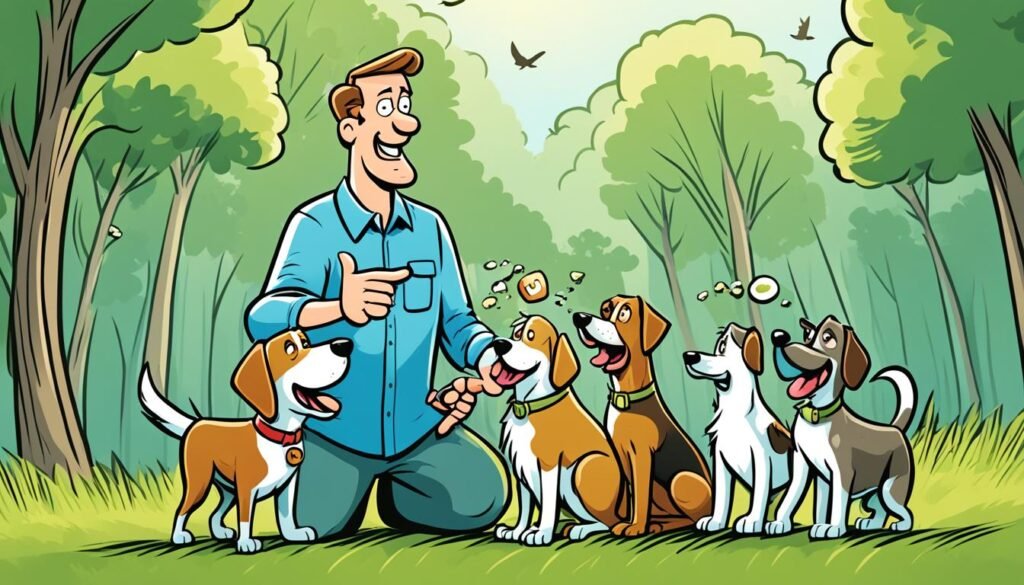
Breaking Down Complex Commands into Simple Steps
To teach dogs, start with breaking down complex commands. Make hard tasks easier in small steps. This method stops dogs from getting confused by too much information.
Utilizing Hand Signals Alongside Verbal Commands
Using hand signals in dog training with words helps a lot. It makes dogs listen better. Signals are great when it’s too noisy for dogs to hear you.
The Role of Repetition in Obedience Training
The saying ‘practice makes perfect’ is very true for dog training. Keep repeating commands. This makes your dog remember them better. So, repeating is really important for teaching your dog.
| Command | Hand Signal | Verbal Cue | Steps for Breaking Down | Repetition Frequency |
|---|---|---|---|---|
| Sit | Upward palm motion | “Sit” | Guide with treat | 5-10 times per session |
| Stay | Open palm towards dog | “Stay” | Gradual increase in distance | Until consistent response |
| Down | Downward hand motion | “Down” | Lead into position with treat | 5-10 times per session |
| Come | Inviting arm gesture | “Come” | Start with a leash guide | Until reliable recall |
Leash Training for Enjoyable Walks
Teaching your dog to walk on a leash is key for fun walks together. It makes sure you both have a good time. Let’s learn to train our dogs for happy walking side by side.
Leash training is more than just holding it; it’s a way to talk to your dog. Telling your dog where to go and how fast is important. Being patient and practicing a lot is key. Start training where it’s calm and move to busier spots later.
- Start with the Right Gear: Choose a comfy collar or harness and a leash that’s easy to control.
- Establish a Signal: Use a word or sound to let your dog know it’s walk time.
- Teach to Follow: Get your dog to follow you with treats or toys as rewards.
- Set the Pace: Keep a steady walking speed, so your dog knows what you expect.
- Positive Reinforcement: Always give your dog treats for walking well beside you.
- Address Pulling: If your dog pulls, stop walking. Continue once the leash is loose.
- Practice Regularly: Short, daily training works better than long, rare sessions.
Fun walks don’t end with training. They become a habit. Keeping walks fun means your dog likes the leash. Fix leash problems fast to avoid bad habits.
Stay calm when facing challenges. Getting upset can make things worse. Every dog learns at their own speed. Good leash training considers this.
The path to great leash manners is ongoing. We hope these tips help you and your dog enjoy walks more.
Effective Crate Training for Puppies
Crate training for puppies has many benefits. It helps with housebreaking and creates a safe place for them. Start crate training with care and use methods that make it fun for your puppy and you.
Choose the right size crate for your puppy. They should move around easily in it. But, a big crate might lead them to have accidents. Use praise and treats to make the crate a happy place. Keep the door open so they don’t feel stuck.
Consistency is key in crate training; keep a regular schedule for meals, potty breaks, and playtime to establish a routine. – Expert Trainer
Our methods help puppies get used to their crate slowly. Begin with short times in the crate and increase as they get comfy. Always let your puppy out to go potty before and after crating. Make sure their sleeping spot at night is calm and far from noise.
| Activity | Duration | Frequency |
|---|---|---|
| Introduction to crate | 5-10 minutes | Several times a day |
| Mealtime inside crate | Duration of mealtime | Every meal |
| Naptime or bedtime crating | Start with 30 minutes | Once a day, gradually increasing |
| Alone-time crating | Start with 20-30 minutes | Once a day, gradually increasing |
Watch how your puppy feels about the crate. It shouldn’t feel like a punishment. If they seem upset, slow down the training. Crate training done right makes puppies feel safe and builds good habits. Go slow, and you’ll see how great a crate-trained puppy can be.
The Role of Play in Learning: Tricks Beyond Obedience
Play in dog training offers much more than basics. It brings a lot of good things for both dogs and trainers. Starting with simple obedience, dogs can move to more fun tricks. This makes training both fun and effective. It helps build a strong connection and makes learning better.
When Training Meets Playtime: Implementing Games
Using games in training mixes fun with learning. It’s a smart way to teach commands while having a good time. Games like tug-of-war turn normal training fun. They make learning faster and more enjoyable.
Advanced Tricks: Building on Basic Dog Training
Dogs ready for more can learn advanced tricks. These tricks make dogs think and move in new ways. They can learn dance moves or go through obstacle courses. This adds excitement to their training. It also shows how amazing dogs can be.
The Benefits of Trick Training for Bonding and Engagement
Trick training does more than just teach cool tricks. It brings dogs and their owners closer. Each trick is a step towards a stronger friendship. It’s about celebrating every win together. And it makes the whole training journey special.
Conclusion
We’ve reached the end of our guide. Let’s wrap up what we’ve learned. This dog training conclusion sums up key points to remember. Using these summary of dog training tips can make you and your dog happier.
It’s all about being consistent and using positive reinforcement training methods. These ways are kind and work very well. They help teach dogs of any breed or age.
Try to use these methods every day with your dog. Every moment with your dog is special. It’s a chance to grow closer. Training or playing can strengthen your bond. Every small step is progress.


